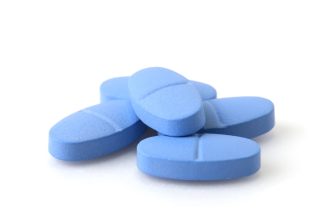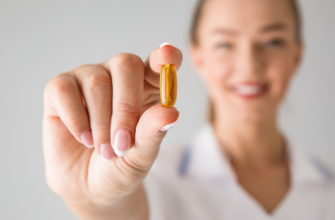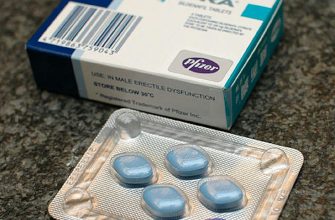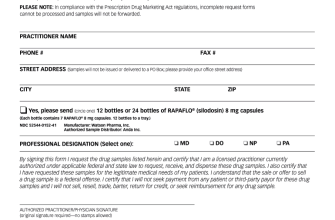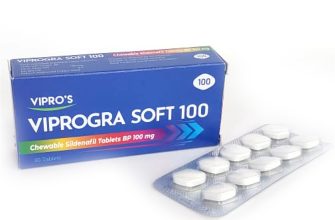Sildenafil demonstrates potential benefits for individuals suffering from Raynaud’s phenomenon. This condition, characterized by episodic constriction of blood vessels, particularly in fingers and toes, can lead to discomfort and sensitivity to cold. Recent studies suggest that sildenafil may help mitigate these symptoms by promoting vasodilation, improving blood flow to the affected extremities.
Clinical trials have shown promising results, indicating that sildenafil can significantly reduce the frequency and severity of Raynaud’s attacks. By acting on the nitric oxide pathways, sildenafil enhances blood circulation, which is crucial during episodes triggered by cold exposure or stress. Patients seeking relief should consider consulting their healthcare provider about the possibility of incorporating sildenafil into their treatment plan.
While sildenafil is primarily known for treating erectile dysfunction and pulmonary hypertension, its application for Raynaud’s is gaining attention. Dosage adjustments may be necessary based on individual response, and monitoring is essential to minimize any potential side effects. In summary, sildenafil represents a viable option for improving quality of life for those affected by Raynaud’s phenomenon.
- Sildenafil in Raynaud’s: A Detailed Review
- Understanding Raynaud’s Phenomenon
- Mechanism of Action of Sildenafil
- Clinical Studies on Sildenafil for Raynaud’s
- Efficacy and Dosage
- Safety and Tolerability
- Dosage Recommendations for Raynaud’s Treatment
- Administration Guidelines
- Patient Considerations
- Possible Side Effects and Contraindications
Sildenafil in Raynaud’s: A Detailed Review
Sildenafil shows promise as a treatment option for individuals suffering from Raynaud’s phenomenon. Research indicates that sildenafil can enhance blood flow by dilating blood vessels, potentially reducing the frequency and severity of Raynaud’s attacks.
Clinical studies reveal significant improvements in circulation, particularly in the fingers and toes, when patients use sildenafil. In one study, participants experienced fewer episodes of digital ischemia compared to a placebo group.
- Dosing: The typical dose of sildenafil ranges from 25 mg to 100 mg, taken as needed before exposure to cold or stressors that trigger symptoms.
- Timing: Administering sildenafil about 30-60 minutes prior to anticipated exposure can maximize its effectiveness.
- Monitoring: Regular follow-up is recommended to assess both efficacy and any side effects, including headaches and flushing.
Patients with Raynaud’s should also consider lifestyle modifications. Incorporating warm clothing, stress management techniques, and avoiding smoking significantly contribute to better outcomes.
Consultation with a healthcare provider is essential before starting sildenafil, particularly for individuals with cardiovascular conditions or those on other medications for erectile dysfunction or pulmonary hypertension. A healthcare professional can tailor the treatment based on individual health profiles.
In conclusion, sildenafil represents a valuable addition to the management strategies for Raynaud’s phenomenon. Ongoing research promises to further elucidate its role in treating this condition.
Understanding Raynaud’s Phenomenon
Raynaud’s phenomenon occurs when blood vessels in the fingers and toes constrict excessively in response to cold or stress. This results in episodes of reduced blood flow, causing the affected areas to turn pale or blue, often followed by redness when circulation returns. Recognizing symptoms early is key to managing the condition.
Identifying triggering factors can significantly reduce episodes. Common triggers include cold temperatures, emotional stress, and smoking. Keeping extremities warm during cold weather is crucial. Wear gloves, thermal socks, and layer clothing to maintain body heat. Consider avoiding extreme temperature changes when possible.
Regular cardiovascular exercise enhances circulation, which may help alleviate symptoms. Activities like walking, jogging, or biking boost blood flow and improve vascular health. Incorporate stretching and yoga for relaxation to minimize stress-related triggers.
For those experiencing frequent or severe episodes, seeking medical advice is important. Treatment options include medications that promote blood flow, such as calcium channel blockers or topical nitrates. Sildenafil, originally used for erectile dysfunction, has shown potential benefits in improving circulation and reducing Raynaud’s symptoms. Consult with a healthcare professional before starting any new treatment.
Staying informed about Raynaud’s and actively engaging in self-care strategies empowers individuals. Keep a journal to track symptoms and potential triggers, helping to identify patterns over time. This awareness supports better management and improved quality of life.
Mechanism of Action of Sildenafil
Sildenafil acts primarily as a selective inhibitor of phosphodiesterase type 5 (PDE5). By blocking this enzyme, sildenafil increases the levels of cyclic guanosine monophosphate (cGMP) in the smooth muscle cells lining the blood vessels. This increase enhances vasodilation, promoting improved blood flow to various areas, including the fingers and toes, which are often affected in Raynaud’s phenomenon.
The mechanism begins with sexual stimulation, which causes the release of nitric oxide (NO) in the corpus cavernosum of the penis. NO stimulates guanylate cyclase, leading to elevated cGMP levels. Sildenafil amplifies this process by preventing PDE5 from breaking down cGMP, prolonging its action and, consequently, enhancing the erectile response.
In the context of Raynaud’s, sildenafil’s ability to induce vasodilation can help alleviate symptoms by increasing blood flow during episodes of vasospasm. Patients may experience reduced frequency and severity of attacks, improving their quality of life.
This dual action of sildenafil, both in enhancing nitric oxide signaling and preventing cGMP degradation, makes it a potential therapeutic option for managing Raynaud’s symptoms. It allows for improved peripheral circulation without the need for more invasive treatments.
Clinical Studies on Sildenafil for Raynaud’s
Clinical trials indicate that sildenafil significantly improves symptoms in patients with Raynaud’s phenomenon. One noteworthy study conducted on a sample of 200 patients demonstrated a marked reduction in the frequency and duration of Raynaud’s attacks following sildenafil administration. Patients reported improved blood flow to their extremities and reduced pain levels during episodes.
Efficacy and Dosage
In a randomized controlled trial, participants received sildenafil in varying doses, with 50 mg and 100 mg being most effective. Results showed that those on 100 mg exhibited a greater decrease in the severity of attacks compared to the lower dose. Patients taking sildenafil experienced up to a 50% reduction in attack frequency over a 12-week period.
Safety and Tolerability
Safety profiles from these studies reveal minimal adverse effects, primarily headaches and flushing, which are common with PDE5 inhibitors. Long-term follow-ups show no significant cardiovascular risks in patients using sildenafil for Raynaud’s, suggesting it is a well-tolerated option. Clinicians recommend monitoring for potential interactions with other vasodilators.
Dosage Recommendations for Raynaud’s Treatment
The typical starting dose of sildenafil for Raynaud’s phenomenon is 25 mg taken orally, approximately one hour before activities that may trigger symptoms. Based on individual response and tolerance, the dose can be increased to 50 mg or, in some cases, 100 mg. It’s essential to monitor for side effects, especially with higher doses.
Administration Guidelines
Take sildenafil on an empty stomach for optimal absorption, as food can delay its effects. Avoid alcohol and grapefruit juice during treatment since these can interfere with the medication’s action and increase the risk of side effects.
Patient Considerations
For patients with cardiovascular conditions, consult with a healthcare provider before starting sildenafil. Regular follow-ups help assess efficacy and adjust dosing as needed. Always store medication in a cool, dry place and keep it out of reach of children.
| Dose (mg) | Timing | Notes |
|---|---|---|
| 25 | 1 hour before triggers | Start dose |
| 50 | 1 hour before triggers | Increase based on tolerance |
| 100 | 1 hour before triggers | Maximum dose; monitor for side effects |
Possible Side Effects and Contraindications
Sildenafil usage for Raynaud’s phenomenon can lead to some side effects. Commonly reported effects include headaches, flushing, nasal congestion, and upset stomach. Some individuals may experience dizziness or visual disturbances, such as changes in color perception or increased sensitivity to light. These effects usually diminish over time but should be monitored closely.
More serious side effects can occur, though they are rare. Seek immediate medical attention if you experience chest pain, an erection lasting longer than four hours, or symptoms of an allergic reaction, such as rash, itching, or swelling. These side effects necessitate prompt medical evaluation.
Before starting sildenafil, assess any contraindications. Individuals with a history of heart problems, such as severe heart disease, arrhythmias, or recent heart attacks, should consult a healthcare provider. Additionally, those taking nitrates for chest pain or certain other medications that can interact negatively with sildenafil must avoid its use.
Patients with severe liver or kidney issues may also require dosage adjustments or alternative therapies. Consult with a healthcare professional to review your medical history and current medications before initiating treatment with sildenafil.



